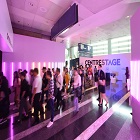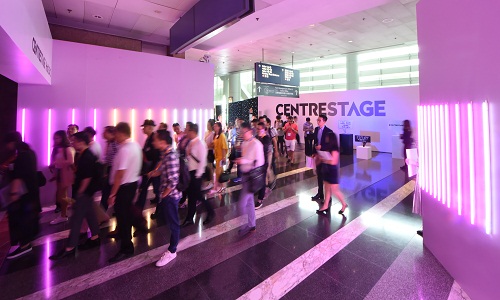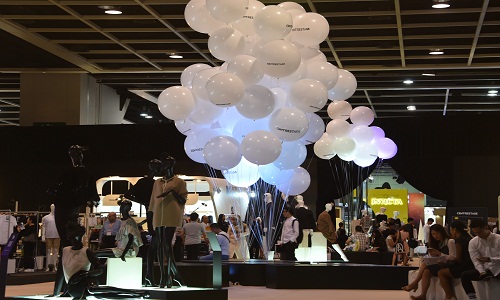FW
With recent reports of mislabeling products relating to Egyptian cotton, Applied DNA Sciences (APDN), a provider of DNA-based supply chain, anti-counterfeiting, authentication, genotyping and anti-theft technologies, today provides market data that shows their DNA-based system can be used to monitor, control or eliminate the off-shore substitution of high-value cotton fibers by fibers of unknown origin.
APDN has a solution that uses forensic science to tag, type and test textile products. Trademarked as SigNature® T for textiles, the core technology has a unique molecular tag that tags cotton fibers en masse in the gin that are subsequently checked at every step of the supply chain as it is made into yarn, fabric and finished goods. In addition to SigNature T, all cotton is fiberTyped®, which quantifies the native DNA within cotton fibers by species prior to ginning to ensure the original cotton species is present.
Once SigNature T DNA tagging was implemented, including the strict storage and labeling protocols, along with inspections and frequent DNA testing, the level of DNA compliance rose quickly to 100 per cent. Data were obtained by APDN from commercial samples.
With Welspun of mislabeling products as 100 per cent Egyptian cotton. Subsequently, a number of cotton retailers have launched formal audits of their products obtained from the Indian company. Earlier, APDN had warned that brands and consumers seriously question Egyptian textile claims.
"CENTRESTAGE, a new brand and designer fashion promotion platform opened today in Hong Kong. Organised by the HKTDC, the four-day (7-10 September) international fashion event has gathered some 200 fashion brands from 20 countries and regions, showcase latest designer collections. More than 50 events are slated to be held during CENTRESTAGE, including around 30 fashion shows with ‘CENTRESTAGE Elites’ being the highlight of the opening gala."

CENTRESTAGE, a new brand and designer fashion promotion platform opened today in Hong Kong. Organised by the HKTDC, the four-day (7-10 September) international fashion event has gathered some 200 fashion brands from 20 countries and regions, showcase latest designer collections. More than 50 events are slated to be held during CENTRESTAGE, including around 30 fashion shows with ‘CENTRESTAGE Elites’ being the highlight of the opening gala.
A trade show with a difference
“Unlike other apparel sourcing shows, CENTRESTAGE is a trade show and not exactly a fair or an exhibition. It is more of a marketing platform for brands and designer labels and is mainly Asia focused. The show aims to be a launch pad for international, especially Asian, fashion brands and designers who can present their collections, while reaffirming Hong Kong’s position as a global fashion capital. It is not a replica of any French, American or western fashion weeks,” opines Byron Lee, Senior Exhibitions Manager, HKTDC, responsible for the project and its marketing and promotions.
Debut CENTRESTAGE’s theme is ‘Shooting Stars’ with four thematic zones: Glam, Allure, Metro and Forward, showcasing fashion brands from around the world, including Chinese Mainland, Taiwan, Japan, Korea, Malaysia, Thailand, India, Australia, the United States and Europe. Local and overseas industry associations are also taking part some of them are: Hong Kong Fashion Designers Association, the California State Trade and Export Promotion & Center for International Trade Development from the US, the Taiwan Textile Federation and the Thailand Textile Institute among others.
Fashion shows and more…
Inaugural brand collections’ first show featured iconic Ika Butoni and other Indonesian designers Ali Chrisma and Zelmira. Some 30 fashion shows will be held during CENTRESTAGE, including those by 45R, anagram, Anteprima, Aquascutum, arthur lam, atsuro tayama, Charmante, Galtiscopio, harrison wong, Hidy N.G., initial, i.t, Jnby, Kenaxleung, Koyo, Loom Loop, Lu Lu Cheung, Marimekko and Moiselle.
More than 30 overseas buying missions from 25 countries and regions, comprising buyers from over 1,000 companies are joining in, these include: Galerie Lafayette from France, Shinsegae from Korea, specialty shop SHIPS from Japan and select shops NY Studio and The Fashion Door (TFD) from the Chinese mainland. Representatives from Lane Crawford, Harvey Nichols and online fashion retailer Zalora are invited to the event. CENTRESTAGE is targeting buyers, particularly select shops, department stores and e-tailers, as well as fashion media and fashion enthusiasts from around the region.
More than 20 industry seminars and networking events, trend seminars, designer sharing sessions, industry seminars and networking events are taking place during the trade show. Apart from fashion shows and competitions spotlighting designers and collections, the International Fashion Supermodel (IFSM) Competition Asia-Pacific Regional Final will be held on the last day. The concluding day will also see final competition of ‘The Hong Kong Young Fashion Designers' Contest’ (YDC) 2016.
HK In Fashion: a citywide celebration of style
The signature fashion event for the region is the talk of the town among fashion enthusiasts from all walks of life. HKTDC has organised a citywide campaign “Hong Kong in Fashion” with support from over 90 partners, including renowned fashion brands, malls, hotels, restaurants and fashion and design institutes.
CENTRESTAGE will become ‘Openstage’ on the last day (September 10), when the doors will open to public so that they can experience the magic of the fashion industry and check out the latest designs from leading brands.
Thanks to increasing demand in both local and international markets amid a fall in the price of raw materials, polyester and yarn producer Indorama Synthetics expects to sell more yarn this year. The company has enjoyed sustainable demand growth in yarn and expects to sell about 18,000 tons more than the 112,500 tons of yarn it sold last year from its production units in four countries viz: Indonesia, Turkey, Sri Lanka and Uzbekistan. The firm’s yarn exports from the four countries increased by 168 per cent to 67,000 tons in 2015 from 25,000 tons in 2010.
Indorama president director VS Baldwa said that a change in lifestyle worldwide has increased demand for fashion. Hence, thread and yarn enjoy sustainable growth from year to year. To realize the sales target, Indorama recently began operating two new plants. The first is in Jatiluhur, West Java, worth $25 million that is able to produce 6,000 tons of yarn per year. The other is in Uzbekistan, producing up to 12,000 tons per year.
Although demand remains stable, the selling price in the yarn industry has been under pressure, along with the price of oil, a raw material for yarn. Indorama hopes to see a better sales value in the second semester as the oil price has relatively recovered. In terms of the sales value from Indonesian production only, the firm suffered a slight drop of 4.2 per cent year-on-year to $336.14 million in the first half. Its other products, namely greige fabric, finished fabric and polyester have also seen volatile sales prices due to the unstable oil price. Oil is a raw material that is used for all of Indorama’s products.
The use of nanotechnology to improve safety of workers will be a key trend for market growth, says report of the Global Safety Apparel Market 2016-2020. The report forecasts global safety apparel market would grow at a CAGR of 8.12 per cent between 2016 and 2020. Increasing focus on quality and customization will be a key driver for market growth.
Advances in nanotechnology have led to the experimental use of nanofibers and composites in PPE. These fibers improve mechanical properties of a PPE at a lower weight making them superior to their conventional counterparts. They also help protect the wearer from thermal, mechanical, chemical and biochemical hazards. With the application of microelectronics in PPE, sensors and actuators can be calibrated to monitor environmental conditions and detect any hazardous particles or gasses.
The report divulges vendors are investing in state-of-the-art manufacturing units as well as R&D to increase the comfort and ease of use of the products while ensuring optimal protection for the wearer. Branded manufacturers are placing great emphasis on product customization and flexibility to meet customer demands and expectations.
Global Safety Apparel Market 2016-2020, has been prepared based on an in-depth market analysis with inputs from industry experts. The report covers the market landscape and its growth prospects over the coming years. The report also includes a discussion of the key vendors operating in this market. To calculate the market size, the safety apparel market report considers the revenue generated from the worldwide retail sales of safety apparel based on their application in the market.
Undoubtedly, India’s textile industry has been one of the largest contributors to the country’s exports and provided employment to several thousands. The government has so far given incentives to the textile industry through tax exemptions and incentive schemes, this has brought down the tax rate. The latest incentive for the textile industry is the Rs 6,000 crore booster package announced in June. This has increased duty drawback significantly.
However, now all eyes are on the most awaited indirect tax reform, GST, On the positive side, GST would bring in uniformity and a level-playing field for textile players. The industry is plagued with several issues including classification disputes (fabric versus garment), differential taxation of cotton and man-made fibre, higher rate for composite mills than power looms, and so on.
Considering the textile industry is tilted towards domestic market with the industry coming under the GST net, domestic textile players would be able to take full credit of input tax as their sales would be liable to GST. This will reduce the cost of capital investment and encourage domestic textile players. The new tax regime should positively influence exporters, as exports would be zero-rated and input tax credit would be fully available to textile exporters. But the applicable duty drawback scheme at high rates will have no an important role to play under GST which could be a dampener.
On the down side, the proposed GST rate of 12 per cent is likely to have a negative impact on the industry, the worst being the cotton value chain which is currently sees zero excise duty under the optional scheme. The textile industry also sees several exemptions (central excise and VAT exemption) through the value chain, thereby reducing tax incidence to an average 8.9 per cent. Additionally, the current rate of tax on branded apparels is much lower than the proposed 12 per cent GST.
The Ministry of Textile Industry of the Pakistan government has repeated the Federal government’s resolve to modernize textile infrastructure and resolve the issues of textile sector industry, to enhance exports for economic growth. The Ministry of Textile was following a multi-pronged strategy to facilitate research and technology up-gradation for the protection and development of textile sector, it is understood.
This was revealed in a recent meeting of Federal Textile Board (FTB) Cotton Committee. An official of the ministry said experts and scientist trained 8,000 farmers to control losses of cotton crops and evolve measure against the pin ball virus that harmed cotton crops in past. He also said in recent times, farmers would get good prices for cotton as rise of its prices in international market would pay back to the farmer as compared to previous years when they got huge financial losses.
He said the preliminary meeting of International Cotton Advisory Committee (ICAC) would be held here from October 30, where stakeholders would discuss challenges being faced by the textile sector. Delegations from government, private sector officials and scientists from 47 cotton producing countries would participate in the five-day long meeting, he informed.
Maroc in Mode would be held in Marrakech, on October 19 -20 and ‘Fashion & Ecology will be specially highlighted at the event. As many as 200 exhibitors are expected to participate in the exhibition. Sustainability is the trend and the demand for eco-friendly products is steadily growing. Morocco is among the countries that follow these challenges for climate protection and clean energy.
The country aims that by 2030, 52 per cent of electricity will be supplied by renewable sources. But sustainability would also play an important role in the Moroccan textile industry to strengthen ecological productions. ‘Green fashion’ finds more supporters worldwide. As a sourcing country, Morocco is attractive in this aspect. There are many reasons: immediate proximity to Europe, zero customs duty due in EU and a stable political situation.
One of the many exhibitors is Chemitex that belongs to worldwide leading textile enterprise which produces in Morocco. Other exhibitors include Vita Couture, that makes textiles for over 20 years, Somitex which produces children and ladie’s fashion for Next, Marks & Spencer and Sainsbury.
Dyneema fiber has long been used to moor oilrigs, sail ships, resist bullets and repair humans. The fiber is almost 15 times stronger than quality steel and up to 40 per cent stronger than aramid fibers and lighter than water. Dyneema fiber floats on water and is extremely durable and resistant to moisture, UV light and chemicals.
Besides offering unparalleled protection, Dyneema is also soft, light and thermally conductive – keeping skin feeling cool in the sweatiest of conditions. As a composite fabric, it is becoming increasingly popular with high-performance sports – from mountain climbing to motorcycling – since it can also be engineered to enhance particular properties.
New generation Dyneema fabrics offer next level innovations in denim, apparel, footwear, sports equipment and lightweight outdoor products and accessories. Dyneema is an important component in ropes, cables and nets in the fishing, shipping and offshore industries. Dyneema is also used in safety gloves for the metalworking industry and in fine yarns for applications in the medical sector. In addition, Dyneema is also used in bullet resistant armor and clothing for police and military personnel.
The fiber is made from ultra high molecular weight polyethylene and offers maximum strength with minimum weight. It has extremely long molecular chains that transfer load more effectively to the polymer backbone.
If the government gives proper policy and financial support, exporters in Bangladesh are positive they would be able to achieve the goal to export goods worth $60 billion by 2021. Of Bangladesh's $60 billion export target for its 50th independence anniversary, $50 billion will be by way of exports of apparel items. However, exporters say they have to face several challenges every day and urged the government to facilitate non-traditional export goods to widen the export basket and help explore new destinations.
The country’s Export Promotion Bureau (EPB) has been conducting studines on products and market diversification to increase the country's overall shipments. The EPB is also conducting a study on how to increase the export of pharmaceuticals, jute and jute goods and leather and leather goods as these are promising sectors after garments.
Fazlul Hoque, Former President of Bangladesh Knitwear Manufacturers and Exporters Association, points out export of goods worth an additional $22 billion is possible in the next five years if the government gives policy support. Abdul Barik Khan, Secretary of Bangladesh Jute Mills Association, demanded increasing financial support for the jute and jute goods sector, as the sector has higher export potential. The government should encourage small and medium garment factories, as they play a vital role in supplying raw materials and accessories to bigger factories.
Pakistan missed crop production target by around 30 per cent in 2015-16. In the crop season 2016-17, the cotton sowing target has been missed by a margin of 15 per cent. Cotton sowing also declined due to lower prices of cotton nationally and internationally during the last three years that discouraged growers who opted to cultivate maize, sugarcane and rice crops in some districts due to their better market returns. There is still uncertainty as ups and downs are being observed in cotton prices due to which growers are reluctant to sow the cotton crop. Up to 50 per cent certified cotton seed is available in the market and growers faced difficulties in getting certified seeds, hence affecting the sowing target.
Cotton sowing targets in Punjab was missed by 20 per cent, while Sindh has surpassed the target by about two per cent, which resulted in an average shortfall of 15 per cent in crop sowing. Sugarcane crop has overtaken cotton rich areas of some provinces.
Due to uncertainty in cotton prices, sugarcane cultivation increased in cotton areas and shortage of certified seed, a significant decline in cotton sowing was registered. The cotton production target as well as area has been revised downward for the 2016-17 season.














